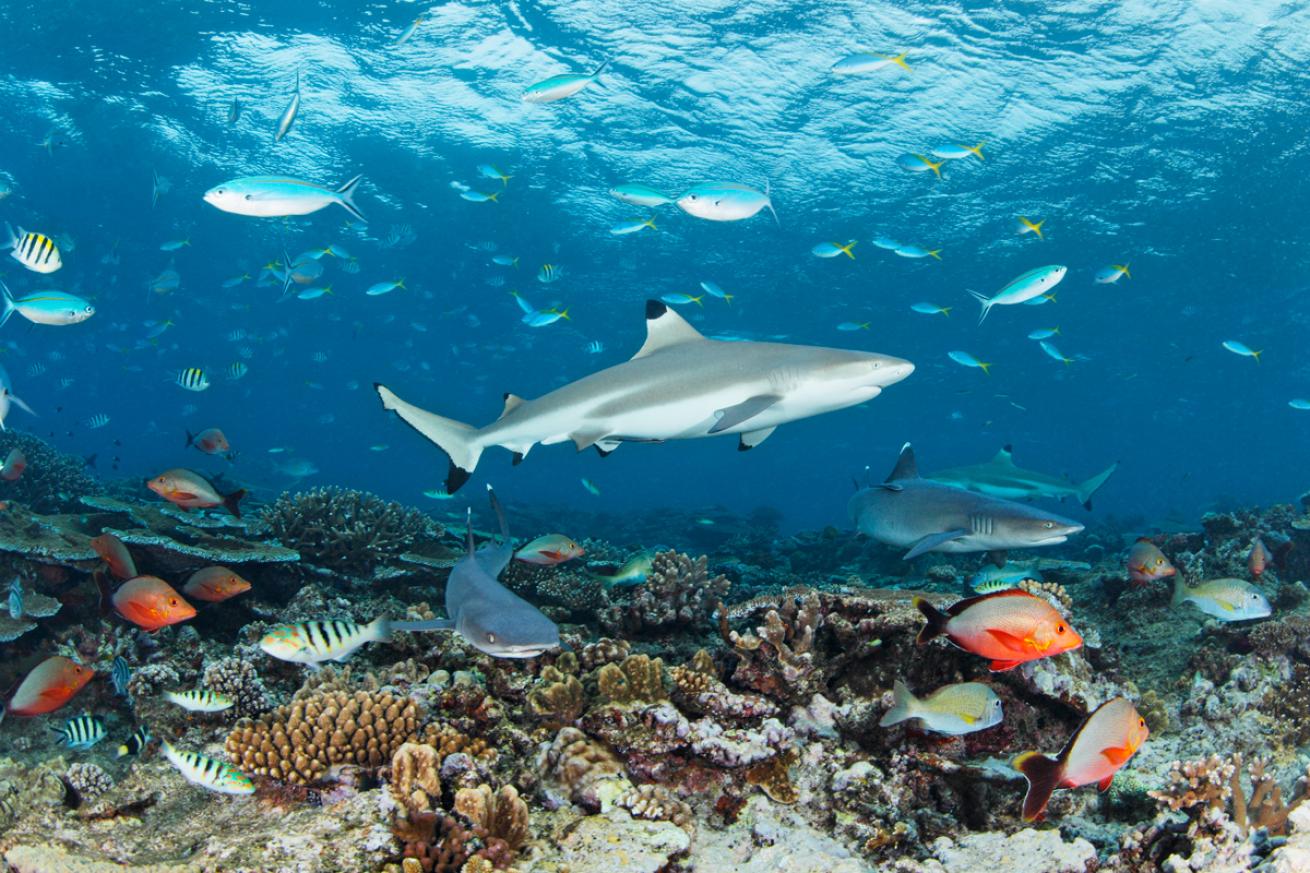How Divers Can Help Protect 30 Percent of the Ocean by 2030

Brandon ColeA blacktip reef shark in the protected waters of Fiji.
If you’ve heard anything about the “30 by 30” global initiative, you know how ambitious it sounds: A consortium of 196 countries have pledged to protect at least 30 percent of the global ocean by 2030. Bold, right? But what you may not know yet is that a handful of big players in ocean conservation are doubling down on their efforts —and just in time.
Come September, these 196 countries will meet in Kunming, China, at the upcoming Convention on Biological Diversity, where they will decide whether to pledge resources and ratify a commitment to 30 by 30. For the PADI AWARE Foundation, a nonprofit dedicated to ocean conservation, this global stage offers a spotlight that can amplify the work to which it’s long been committed. In 2022, PADI announced a renewed commitment alongside founding sponsor Blancpain to create more MPAs as part of its Blueprint for Ocean Action.
Blancpain was an early adopter of ocean conservation programs. The Swiss watch designer committed to the debut efforts of National Geographic explorer-in-residence Enric Sala’s Pristine Seas initiative and financially backed 14 of Sala’s expeditions from 2011 to 2016, resulting in the creation of 1.8 million square miles of protected ocean.
Through that work, it became clear government representatives are more likely to support MPA implementation when they understand that it increases economic gains.
The protection of just one underwater area can bring about huge ecological improvements for the surrounding areas, increasing the available fish populations for both commercial fishing and tourism diving. “Fiji was able to show that shark diving brought in $42.2 million a year, and that in turn led to the Fijian government creating a shark-and-ray conservation area,” says Ian Campbell, PADI AWARE associate director of policy and campaigns.
It’s exactly that kind of MPA success story that PADI hopes to recreate the world over. The first step, says Campbell, “will focus on small islands in developing states that have significant tourism as part of their GDP.”
In addition to focusing on these coastal areas, PADI AWARE will concentrate its efforts in destinations where there is an existing network of dive operators—places like the Maldives, Fiji, Borneo, the Dominican Republic, Bonaire and Curaçao. “We’ve got the greatest on-the-ground presence in these places, allowing us to ramp up quickly,” he says.
The next step is soliciting the help of these dive centers in identifying which coastal areas serve as key habitats in need of protection. This falls under the scope of PADI AWARE’s Adopt the Blue campaign, which aims to create a central database of the most critical underwater areas in every dive destination.
Once these targets are in place, PADI AWARE will work with dive centers on next steps, supplying strategy road maps and tools for getting government buy-in. “We will be offering an MPA-in-a-box,” says Katie Thompson, global director of PADI Corporate Social Responsibility.
The supplied MPA tools come with PADI AWARE’s ongoing support to strategize and problem-solve, both especially vital considering that the MPA designation process is very different in every country—but what all MPAs have in common is that they must receive government approval.
The scope of PADI AWARE’s mission is much like Sala’s in that it aims to protect the oceans, but the specific geographic focus is a deliberate departure from Sala’s work for several reasons.
“What we want to do is turn our attention to smaller MPAs that are closer to our local communities,” says Alexios Kitsopoulos, project manager at Blancpain. The downside of protecting far-flung destinations is that few people ever see the product of this work.
“This makes it a bit abstract for people,” says Kitsopoulos. “Instead, if people can go to these places and see them, this is very different because then people can speak about what they see—and that can make millions of people aware,” he says. “This in turn makes them ambassadors that will go on to support the continuation of our efforts.”
How can you help?
Learn more about the PADI AWARE Foundation and donate to these conservation efforts at padi.com/aware.
Fighting for 30 Percent
Say hello to PADI AWARE’s new Adopt the Blue campaign
Central to PADI AWARE’s commitment to increase the number of marine protected areas is its new Adopt the Blue campaign, which recruits local scuba centers to identify dive sites that are most valued, most critical and most in need of MPA protection.
PADI brings together approximately 7,000 registered scuba operators, which, in turn, could create the largest collection of dive sites around the world. “In the next three years, we want to get three-quarters of all PADI operators to identify a site that has meaning to them and would do well to be adopted,” says Ian Campbell, PADI AWARE’s associate director of policy and campaigns.
Short-term, the goal is to have 1,000 such sites identified by the end of 2022.
On World Oceans Day, June 8, PADI will collaborate with founding partner Blancpain to launch an interactive map on padi.com where divers and other citizen scientists can track which dive sites have been nominated for MPA status—and which selected sites already exist within an MPA.
World Oceans Day will also see the launch of the Adopt the Blue app, aimed at dive industry professionals as a place to submit this information. The next phase of the app will roll out in 2023, and will allow divers to financially sponsor a dive site, just as you would a star or a sea turtle. “As this program gets established, there will be more and more opportunities for divers to get involved,” Campbell says.










